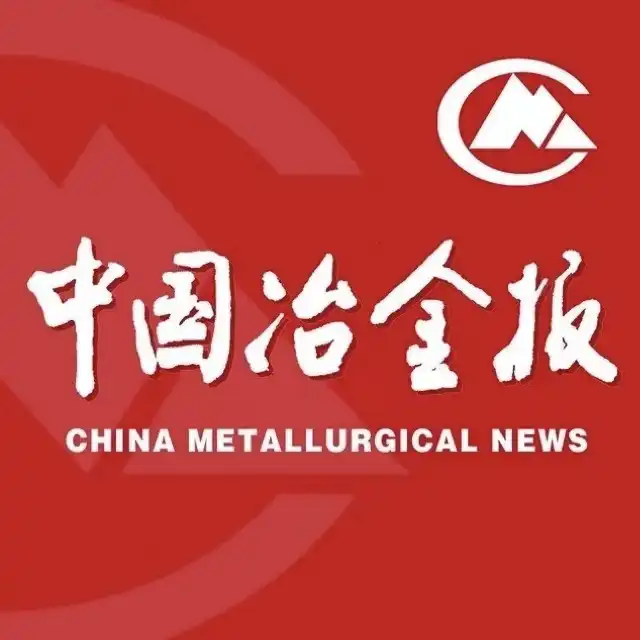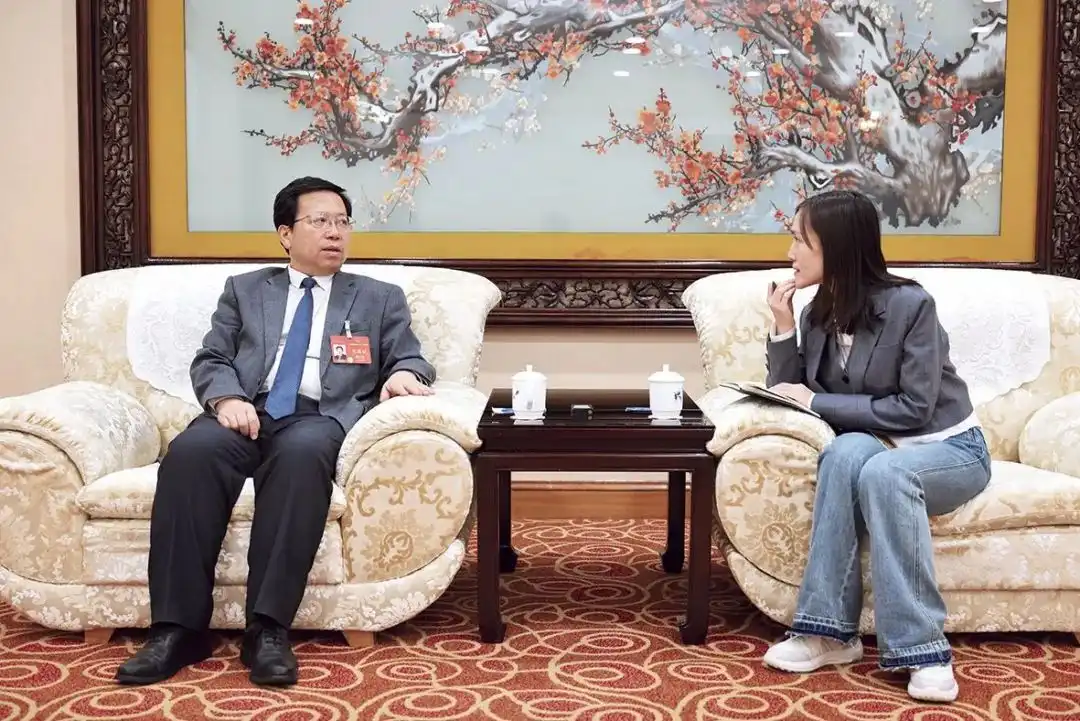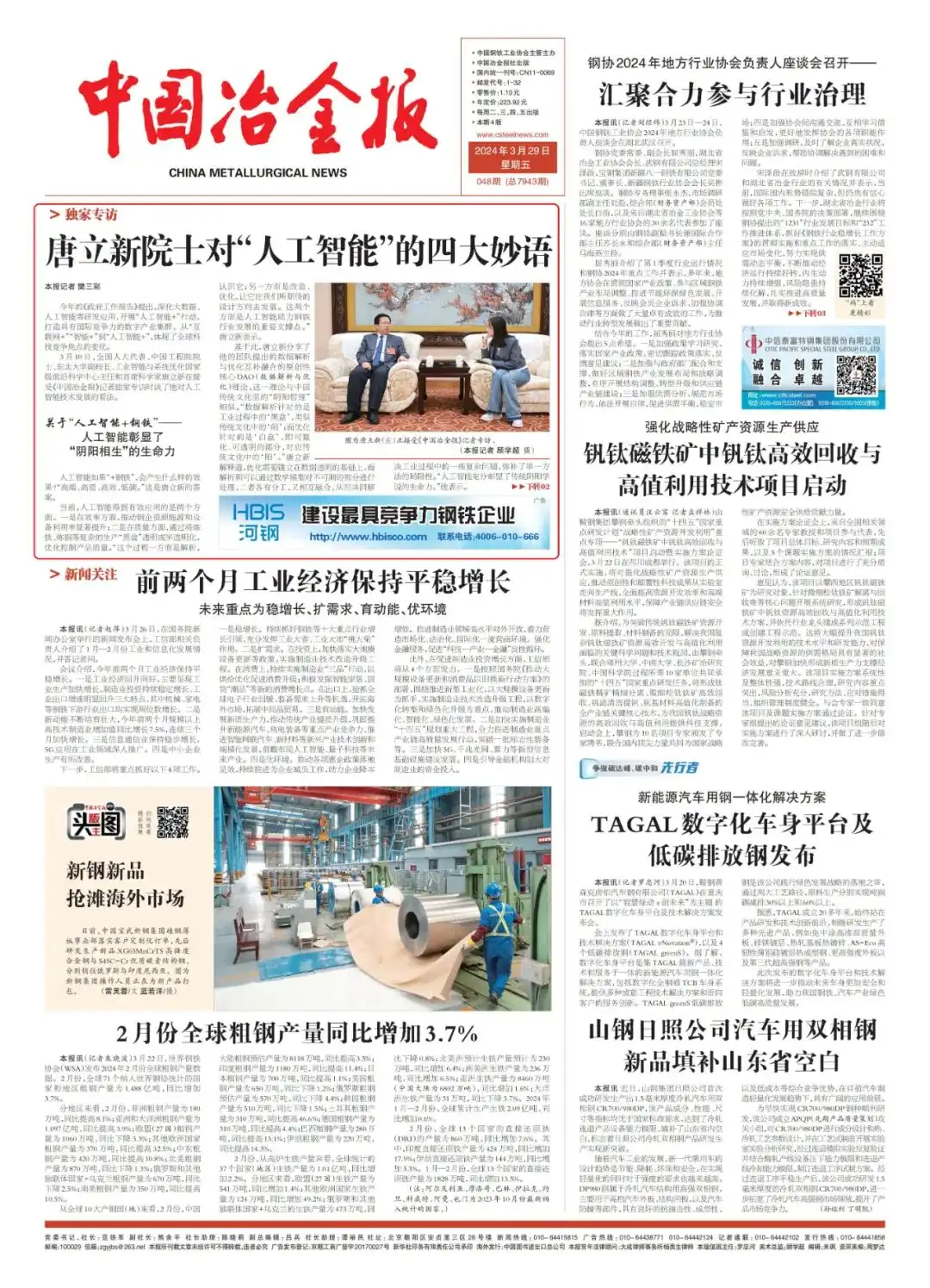Artificial intelligence empowers the steel industry:Create a digital industry cluster, embrace and calm, and build a diamond-like modern industrial system
The following article is from China Metallurgical News, the author is China Metallurgical News
 China Metallurgical News.
China Metallurgical News.
点击“关注”中国冶金报社微信公众号,每天为您提供钢铁行业权威的信息资讯,让您的阅读更便捷、更专业! 官方网站:中国钢铁新闻网(www.csteelnews.com)。
This year's "Government Work Report" proposes to deepen the research and development and application of big data, artificial intelligence, etc., carry out the "artificial intelligence +" action, and create an internationally competitive digital industry cluster. From "Internet +","Smart +" to "Artificial Intelligence +", it reflects the changes in the focus of global science and technology competition.
On March 10, Tang Lixin, a representative of the National People's Congress, academician of the Chinese Academy of Engineering, vice president of Northeastern University, director and chief scientist of the National Frontier Science Center for Industrial Intelligence and System Optimization, talked about his thoughts on artificial intelligence in an exclusive interview with a reporter from China Metallurgical News. Views on the development of intelligence technology.

About "artificial intelligence + steel"-artificial intelligence demonstrates the vitality of "yin and yang"
If artificial intelligence is "+ steel", what effect will it have? "High-end, high-quality, efficient and low-carbon." This is Tang Lixin's answer.
Currently, there are two aspects in which artificial intelligence is effectively applied. First, in terms of efficiency, it promotes a significant improvement in the utilization rate of resources, energy and equipment in steel enterprises; second, in terms of quality, optimizes and controls product quality by making complex production "black boxes" such as ironmaking and steelmaking transparent or translucent. "On the one hand, this process is to analyze and understand it; on the other hand, it is to transform and optimize it to develop in the design direction we expect. These two aspects are important supporting points for artificial intelligence to help the development of the steel industry." Tang Lixin said.
Based on this, Tang Lixin shared the original core DAO (Data Analysis and Optimization) theory proposed by his team, which complements and integrates data analysis and optimization. This theory is similar to the "Yin-Yang philosophy" in traditional Chinese culture. "Data analysis is aimed at the 'black box' in the industrial process, similar to the 'yin' in traditional culture; while optimization is aimed at the 'white box', which is the quantifiable and transparent part, corresponding to the 'yang' in traditional culture." Tang Lixin explained that optimization needs to be based on data transparency, while analysis can deal with unmeasurable parts through mathematical models. The two have their own division of labor and are integrated with each other to jointly solve some complex problems in the industrial process., making up for the limitations of a single method. "Artificial intelligence fully demonstrates the vitality of the traditional Yin-Yang theory." He said.
As a new thing, artificial intelligence still has a long way to go before it plays a greater role through scientific and reasonable application. In Tang Lixin's view, as the application of artificial intelligence in the steel industry gradually deepens, there will be many challenging issues in the future, such as how to optimize the entire process; how to use higher-performance algorithms to support it; and how to carry out the quality of high-end steel. Design and control, etc., all require more in-depth research.
Tang Lixin revealed that in order to meet these challenges, his team will conduct research in two important directions in the next step. On the one hand, study common technologies and underlying technologies of industrial intelligence, use systematic thinking to "chain" these technologies, and understand industrial processes more clearly. Among them, common technologies include image recognition, voice recognition, etc., and underlying technologies include chips, computing power, algorithms, etc. On the other hand, strengthen the application of DAO theory in practice, combine it with industrial processes, and strengthen in-depth cooperation with the steel industry, equipment manufacturing and other aspects.
About building a unified data platform for the industry--It is not without explanation that companies are unwilling to share data
As of now, the steel industry has accumulated a large amount of data. Is the current data scale large or small? Is it difficult or easy to process this data? In Tang Lixin's view, the data size is relative and related to the problem it solves.
"Data collection should adhere to a problem-oriented approach, not pursue large and comprehensive, but should pursue appropriateness, adaptability and effectiveness." Tang Lixin further explained that too large data not only increases costs, but also puts pressure on later identification and understanding. Therefore, at present, on the one hand, we must efficiently utilize the collected data; on the other hand, we should redesign the data collection process based on needs.
Regarding how to apply data, some experts in the industry have proposed establishing regional steel data centers or a unified big data center for the steel industry. Tang Lixin highly agrees with this view and believes that this is a very forward-looking view considered from the national and industry levels. If we can give full play to the advantages of the national system, design an industry platform in an organized manner, and break the data boundaries between enterprises, we are expected to achieve win-win cooperation.
"The difficulty lies in the fact that companies 'perspectives and ways of thinking are significantly different from those of the industry, and it is easy for companies to be unwilling to share." Tang Lixin pointed out. However, in his view, this problem is not unsolved."As long as multiple technologies such as identification analysis, blockchain, and privacy computing are matched, we can take into account the interests of all parties and achieve the purpose of protecting privacy and recycling data."
First, clarify ownership through identification analysis. The core is to label the data of each company with an "identity label" through coding under a unified framework to clarify ownership.
Second, based on cryptography and other technical means, blockchain realizes decentralized data circulation and transactions. Improve data security and credibility by building a trust mechanism.
Third, use private computing to achieve data confidentiality. The above two technologies can be regarded as solving the problem of information flow, while this technology focuses on solving the problem of confidentiality.
"The three technologies can complement each other to solve the concerns of companies in the industry." Tang Lixin said. He also encouraged advanced enterprises to break traditional thinking, actively participate in the construction of industry platforms, actively share and create value together.
Tang Lixin used peony flowers as a metaphor. Spring flowers, summer leaves, and autumn stems each have its own beauty. No company can exhaust all its advantages and establish a common platform, and everyone will benefit.
"To achieve this goal, at least three tasks must be done well.:First, a strong organization is particularly needed to take the lead and unify thinking and understanding; second, focus on research and technology to ensure that the platform can be implemented; third, work together to create value so that this platform can produce tangible benefits. Only in this way can we truly promote the development of the entire industry." Tang Lixin said.
About emerging technologies-Embrace and calm
In the past two years, ChatGPT has continued to evolve, and the Sora model has made a stunning appearance. Is the steel industry chasing trends or maintaining itself? In an exclusive interview with a reporter from China Metallurgical News, Tang Lixin provided his own coping ideas-"Embrace and calm". "Embrace" means to maintain close attention and proactively understand emerging technologies;"Calm" means to combine the practical application of enterprise development and do what you can within your capabilities.
Currently, there are differences in the development paths of artificial intelligence between the United States and China. Emerging technologies such as artificial intelligence in the United States are mainly used in the consumer industry, while China mainly uses clear scenarios to force research. The application of emerging technologies in any industry will have a huge promotion or even disruptive effect on social progress. If it is applied in the steel industry, it is necessary to "choose the best and follow it."
At present, some steel companies have a tendency to blindly pursue new concepts such as digital twins, metaverse, and big models. In Tang Lixin's view, this is a misunderstanding. He quoted Schumann's words,"Technology is valuable only if it serves noble purposes" and emphasized that "technology cannot be used for technology's sake."
"There is a basic principle in everything, that is, start with the end, make it clear what we want, and everything else is a means." Tang Lixin believes that for steel companies, producing high-end, high-quality, efficient and low-carbon products so that they can better meet the needs of downstream customers and be more competitive in the market is the highest goal pursued by the company. Technical tools that can promote the realization of this goal should be applied and innovated in a timely manner; otherwise, they must be re-thought and designed, and "technology will eventually return to its essence."
In Tang Lixin's view, the intelligent development of steel enterprises should be driven by "dual forces". First, the "external force" of downstream demand. Steel enterprises should be deeply integrated with downstream customers to improve the service level of manufacturing industry; second, improving quality and efficiency. The "internal driving force" regards improving quality and efficiency as the eternal independent pursuit of steel enterprises. "The application of technology should return to its essence under this framework, that is, through visual simulation, deepen human understanding of industrial processes, thereby enhancing the initiative of control and intervention, and ultimately achieving improvement in quality efficiency and competitiveness." he said.
Regarding building a modern industrial system-forming a diamond-like three-dimensional structure
The "Government Work Report" proposes to vigorously promote the construction of a modern industrial system and accelerate the development of new productive forces. "In the future, artificial intelligence will have great potential in the construction of a modern industrial system." Tang Lixin said.
He shared his understanding of the modern industrial system, that is, the modern industrial system means that the focus is no longer a tree, but a forest; the pursuit is no longer the development of a single enterprise or a single industry, but a manufacturing cycle industrial system that connects various elements three-dimensionally and achieves the goal of high-quality and efficient circulation.
Building a modern industrial system is inseparable from eight words-"creating, downstream, empowering, and increasing intelligence." Creation means the transformation of material forms; downstream means the construction of a smooth logistics system; empowerment means that enterprises achieve energy conservation and carbon reduction through energy linkage and collaborative optimization; intelligence means that improving quality and efficiency through industrial intelligence. "These eight words can make the industrial system independently controllable, high-quality and efficient." Tang Lixin pointed out.
What kind of system should we build? Tang Lixin compared the differences in structure and properties between diamond and graphite. "Diamond is extremely hard and graphite is extremely soft, but both are made up of carbon atoms. The main difference is that the carbon atoms in diamond are connected in a three-dimensional network manner, up and down, left and right, and back, while graphite has a planar structure, and each layer is connected very tightly, and there is a Van der Waals force between layers (intermolecular forces)." Tang Lixin continued,"Building a modern industrial system between enterprises is like forming a three-dimensional structure like diamonds. Only in this way can the system be strong."
Tang Lixin said:"The National Frontier Science Center for Industrial Intelligence and System Optimization is currently conducting in-depth research on the topic of accelerating the construction of a modern industrial system with Northeast characteristics and advantages, and looks forward to making its own contributions to the independent control of the modern industrial system. Among them, industrial intelligence plays an important supporting role, and we will go all out to explore its applied research from a system perspective."

reporter| Gu Xuechao (photo) Fan Sancai (text)
edit| Hao Shuhui
audit| Liu Jiajun
planning| Chen Xiaoli
